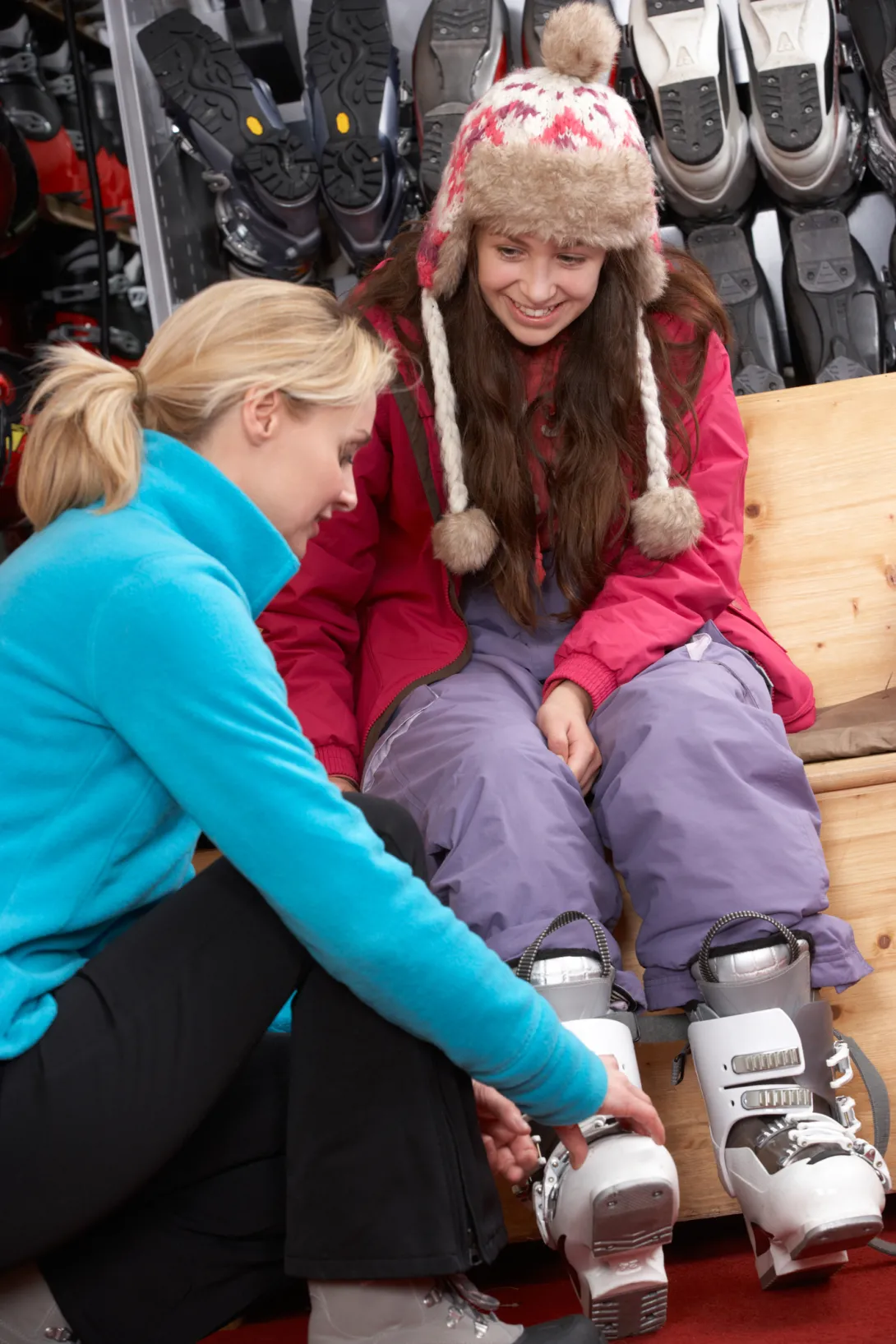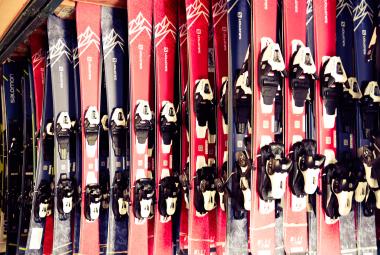Wearing proper fitting ski boots is one of the most important things you can do on the slopes as it can really make or break your skiing experience.
Wear ski boots that are too big and you may end up with blisters. Wear ski boots that are too tight and it will lead to a lot of pain in your feet, ankles, and shins.
Wearing ski boots that fit properly will allow you to ski safely and comfortably so all you need to focus on is your performance.
But finding the perfect fitting ski boots is an intricate process, though it’s one that’s worth investing time and money into. And you can’t find the perfect fitting ski boots if you don’t even know what to look out for! Keep reading to learn how ski boots should fit, feel, and function and learn our top tips for finding the perfect ski boots for you.
How Ski Boots Should Fit

Ski boots sizes can be confusing because they are not measured the same way your regular boots are, they are measured by Mondopoint, which is the length of your foot in centimeters. It also takes into account your last, or the width of your foot at its widest point in centimeters.
To test whether your ski boots are the right fit, first put them on without socks and slide your toes all the way to the front.
Get into an athletic stance, bend your knees, and flex forward. How your ski boots should fit depends on your skill level. If you’re a beginner to intermediate skier, you’ll want your ski boots to hit about mid-shin and you should be able to fit two fingers between your calf and the cuff of your boot.

An expert skier will want a more snug and performance-oriented fit, and should be able to fit one finger between the calf and the shell.
If your ski boots pass the test, try them in a pair of skis and see how they feel.
How Ski Boots Should Feel

Ski boots should be comfortable on your feet while you’re moving in a pair of skis. They should be snug enough that your feet don’t move around in them, but not so tight that they’re painful.
You should be able to wiggle your toes but not slide your foot back and forth inside of your boot. If your ski boots are too tight, you’ll end up with aches and pains somewhere in your legs and it will lead to a pretty miserable ski day. If your ski boots are too big, it could lead to blisters, poor performance, or possibly even injury.
Make sure you really test out your boots to see if the fit is right for you before committing to a purchase.
How To Break In Ski Boots

New ski boots are going to be stiff and uncomfortable, but there are a few ways you can speed up the process of breaking them in so you can feel comfortable in your footwear and extend your ski days.
The first and easiest way is to ski in them. Over time your ski boots will flex and loosen and break themselves in. You could also walk around in them even just around the house for a few hours before you wear them down the slopes for the first time.
Another great way of breaking in your boots is heating them up so they mold to your feet or asking your local ski shop to do it. This will help the liners loosen up and mold quicker.
How Long Ski Boots Should Last

Your ski boots should last approximately 150-200 days of skiing. The liners should last about 90, meaning you’ll want to change out the liners about halfway through your ski boot’s life when you start noticing that they’re worn.
In order to make your boots last as long as possible, you want to make sure that you take them on and off properly, and store them properly by keeping them as warm, dry, and as protected from the elements as possible.
Tips For Finding The Perfect Fit
Get five measurements

You want to make sure to find a skilled boot fitter when buying ski boots.
A good boot fitter won’t only measure the length and width of your foot. They will take five measurements: heel to toe, heel to the ball of the foot, instep, forefoot width, and calf. On both feet. Based off of your measurements and skill level, they will be able to narrow down the options and help you find the perfect ski boots for you.
Consider flex and height

There’s more to boots than just the size of your feet. Don’t forget, your calves, shins, and ankles are also involved when wearing boots.
As far as height goes, you want your boots to fit about mid-shin. Women may even find that a men’s boot fits them better than a woman’s boot and vice versa depending on height. Men’s boots have taller cuffs which may help someone with longer legs maintain control while skiing.
With a shorter cuff, you may find your calves feeling squeezed, which can cut off circulation and lead to painful problems.

You also will want to consider your boot’s flex when shopping for the perfect fit. Flex rating isn’t perfectly consistent among brands, but most boots have a rating between 60 and 130 which tells you how bendable your boots are.
Women should generally wear boots with a flex rating of 80 and above while men will want to shoot for 90 and above. Mess around with different flex ratings to see which one is perfect for you. A flex rating that is too low will cause your knees to fall forward and it won’t provide a base for your boot to bounce back coming out of a turn.
A flex rating that is too high can lead to skis that chatter or vibrate, causing you to lose your edge and potentially control of your feet.
Finding that perfect middle ground will allow you to glide gracefully from one turn to the next while your feet remain warm and comfortable throughout the day.
Be patient

Finding the perfect pair of ski boots is going to take some time, but you need to make sure you trust the process and move through it slowly.
The way your ski boots feel and fit will loosen and change over time, so you want to make sure you give them a few tries before making any changes to the fitting. Always bring them back in though if anything feels off as your boot fitter will be able to assist you in eventually ending up with perfect fitting boots.
Just be sure to find a professional boot fitter, try out many different ski boots, and continue to tweak them as you go and you’ll end up with perfect fitting ski boots in time!







